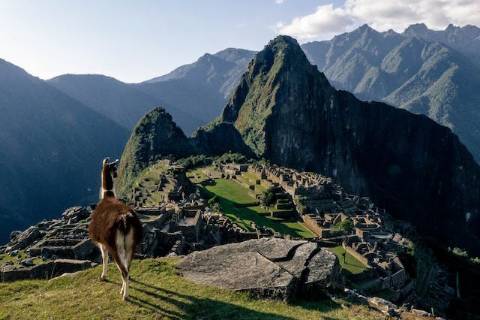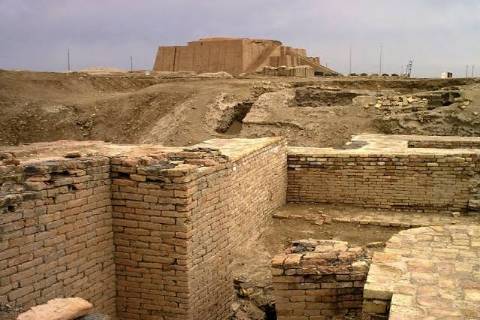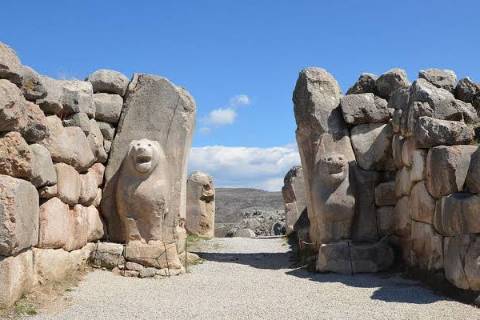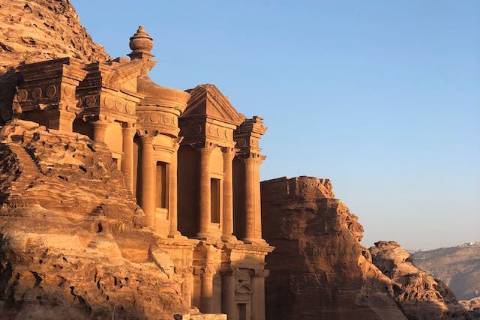Explore the fascinating history of once-lost civilizations rediscovered by archaeologists. Uncover mysteries and marvel at the secrets of ancient worlds. #Archaeology #History
#10
Mesoamerican civilizations (Olmec, Zapotec, etc.)

Mesoamerican civilizations, including the Olmec and Zapotec, thrived before the Spanish conquest in the 16th century. Various factors contributed to their decline, such as warfare, resource depletion, and the introduction of new diseases.
Rediscovered through archaeological exploration and deciphering ancient texts, the ruins of cities like Teotihuacan, Palenque, and Tikal have offered insights into their advanced cultures, sophisticated architecture, and complex societies.
Scholars like John Lloyd Stephens and Alfred Maudslay played key roles in rediscovering and documenting these fascinating civilizations in the 19th century.
#9
Great Zimbabwe

Great Zimbabwe, a medieval city in southeastern Africa, flourished from the 11th to 15th centuries. Its decline is associated with factors like environmental changes, resource depletion, and shifts in trade routes.
Rediscovered by European explorers in the late 19th century, the significance of its stone structures became apparent.
Archaeological investigations by figures like David Randall-MacIver and Gertrude Caton-Thompson unveiled the city's architectural prowess, trade connections, and cultural achievements, solidifying its place in African history and archaeology.
#8
Ur (Sumerian Civilization)

Ur, a prominent Sumerian city-state, thrived around 2100 BCE, known for ziggurats and advanced culture. Its decline resulted from factors like shifting river courses and political changes.
Rediscovered in the 19th century by British archaeologist Leonard Woolley, excavations revealed the city's royal tombs and artifacts. The "Royal Cemetery of Ur" provided insights into Sumerian society, art, and technology.
Ur's rediscovery illuminated its significance as a major center in the Sumerian civilization, enriching our understanding of ancient Mesopotamian history.
#7
Angkor (Khmer Empire)

Angkor, the capital of the Khmer Empire, reached its zenith in the 12th century. Its decline, attributed to factors like environmental stress, resource depletion, and political changes, led to its abandonment.
Rediscovered in the 19th century by French explorer Henri Mouhot, Angkor's vast temple complex, including Angkor Wat, garnered international attention.
Subsequent archaeological efforts unveiled the extent of this once-hidden empire, shedding light on its grandeur and contributing to the understanding of Khmer history and architecture.
#6
Pompeii and Herculaneum

Pompeii and Herculaneum, Roman cities near Naples, were destroyed by the eruption of Mount Vesuvius in 79 AD. Buried under ash and pumice, the cities were remarkably preserved.
Rediscovered in the 18th century during the excavation commissioned by Charles III of Spain, the well-preserved remains offered unprecedented insights into daily life in ancient Rome.
Excavations, ongoing to this day, continue to reveal the architecture, art, and artifacts of these once-thriving cities frozen in time.
#5
Hittite Empire

The Hittite Empire, centered in Anatolia, flourished from the 17th to 12th centuries BCE. Its decline was likely due to a combination of internal conflicts and external pressures.
Rediscovered in the 19th century, largely through the efforts of archaeologists like Hugo Winckler and Theodore Makridi, the Hittite capital Hattusa was unearthed in present-day Turkey.
Inscriptions, texts, and artifacts provided insights into the Hittites' history, language, and interactions with other ancient civilizations.
#4
Machu Picchu (Inca Empire)

Machu Picchu, a renowned Inca city in the Andes, was built in the 15th century and abandoned, possibly due to Spanish conquest or disease, contributing to the Inca Empire's decline.
Forgotten for centuries, it was rediscovered by Hiram Bingham in 1911 during a Yale University expedition.
Bingham's explorations unveiled the well-preserved ruins, leading to increased awareness and recognition of Machu Picchu as a remarkable archaeological site and an iconic symbol of Inca civilization.
#3
Petra (Nabataean Kingdom)

Petra, the capital of the Nabataean Kingdom, was a thriving city known for its rock-cut architecture and trade routes. Its decline was influenced by factors like trade route shifts and earthquakes.
Rediscovered by a Swiss explorer, Johann Ludwig Burckhardt, in 1812, Petra had been lost to the Western world for centuries.
Burckhardt posed as an Arab traveler to gain access to the city, and his vivid descriptions sparked interest, leading to further explorations and recognition of Petra's archaeological significance.
#2
Troy

Troy, a legendary city-state in ancient Anatolia, was made famous by Homer's epics. Historically, multiple Troys existed, with the most well-known being Troy VI and Troy VII.
The fall of Troy, often associated with the Trojan War, may be attributed to a combination of factors such as warfare, earthquakes, and economic decline.
Rediscovered in the late 19th century by Heinrich Schliemann, who believed in the historical basis of Homer's tales, the excavation unearthed the ruins of Troy in modern-day Turkey, shedding light on its historical reality.
#1
Maya Civilization

The Maya civilization, thriving from 2000 BCE to 1500 CE in Mesoamerica, was known for advanced art, architecture, and hieroglyphic writing.
Factors contributing to their decline include environmental stress, warfare, and political instability. Rediscovered by explorers and scholars in the 19th century, detailed investigations, such as those by John Lloyd Stephens and Frederick Catherwood, brought attention to the Maya's monumental ruins.
Deciphering their hieroglyphs has since provided insights into their sophisticated culture and complex history.


















